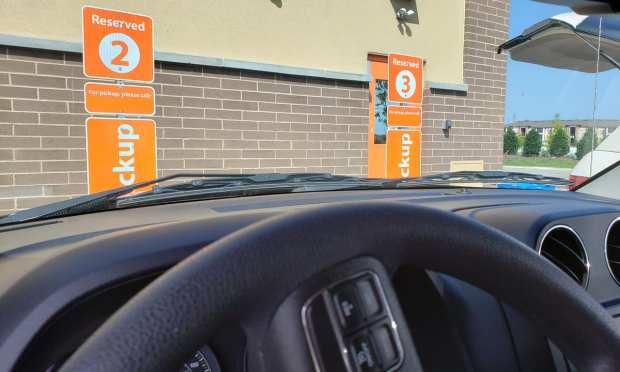Early Shopping And BOPIS Lead As Consumers Navigate A Tricky Shopping Season

To say the least, the retail industry finds itself in the middle of a tricky holiday season. As of late October, data released by LendingTree indicated that a quarter of consumers were already finished with their holiday shopping for 2020. According to the survey, a large swath of those early shoppers were parents of children under 18 years of age, 44 percent of whom had managed to wrap up their holiday shopping before outfitting their kids in Halloween costumes this year.
A pick-up in consumers looking to get the jump on the biggest shopping season of the year seems to be a certainty, with large swaths of customers buying more and earlier. But that has seemingly left a fairly sizable chunk of consumers behind – namely, the 56 percent who haven’t quite kicked over into holiday shopping mode.
“This is further evidence that the holiday season has grown far beyond the period between Thanksgiving and Christmas – many consumers have already been shopping for weeks, and retailers are increasingly adapting to that,” said NRF President and CEO Matthew Shay. “But Thanksgiving is still a hallmark of the season, and there’s billions of dollars in shopping still to come.”
Still to come, but perhaps a bit more complicated – and, in some cases, costlier than it has been in recent years. Over the course of the last five years, gift ordering cut-offs have been pushing deeper into the season, all the way to Dec. 20-21 for guaranteed on-time delivery. This year, the cutoff date has been pushed back to Dec. 15 and earlier – meaning consumers who want their gifts delivered by Christmas Eve need to be at the post office (or clicking Buy) a bit earlier this year.
Also, with consumers shopping online instead of in stores at unprecedented levels, more shipping issues are expected to arise as sales begin to spike in early December, with consumers looking to beat the clock on those delivery deadlines to avoid some very expensive shipping costs.
So, what will those consumers do?
The Amazon Approach
They might go to Amazon. It has not, as of yet, published its official Holiday Shipping Calendar with their cut-off dates. All indications show that the eCommerce giant is very serious about keeping its delivery capacity up and roaring for the season.
According to reports, Amazon plans to open 1,000 “mini” delivery hubs in suburbs and cities across the nation, and will move ahead with plans to launch an armada of delivery drones. The company also got approval from the Federal Aviation Administration (FAA) to start delivering packages and other items via drones.
With eCommerce sales up 44 percent year on year in Q2, and set to potentially grow by a lot more than that in the holiday shopping quarter, Amazon is aggressively trying to lock up that spend by leveraging their core capabilities around delivery logistics.
With its large marketplace of merchants, Amazon has a fairly strong bulwark against inventory shortfalls (though not an invincible one, as the early COVID-19 price gouging incidents demonstrated), and is making sure its delivery capacity (and drone armada) is moving to meet a surge of suburban demand from the rush of consumers who won’t be heading out to the mall this year.
But Amazon isn’t the only option.
The BOPIS Competitors
Consumers, on the advice of the CDC, are largely expected to eschew shopping in physical stores this year – but that doesn’t necessarily mean they won’t drive to the store in the comfort and safety of their own cars. They’re just less than enthused to actually go inside and walk around to shop.
That’s why retailers like Walmart, Target, Kohl’s, Sam’s Club, Nordstrom, Sephora, The Gap, Old Navy and others are all doubling down on offering buy online, pick up in stores (BOPIS) services – in some cases delivering directly to the consumer’s trunk in the parking lot after the transaction has been completed within the retailer’s mobile app.
And as recent PYMNTS data demonstrates, consumers are increasingly developing a preference for curbside and BOPIS options when it comes to managing their commerce journeys. Interest in curbside pickup has grown significantly, with 15.5 percent of those who purchase digitally citing it as their preferred way to shop in July, up from 10.8 percent in March. The preference for simply buying online and having to enter the store declined slightly in the same period, reflecting consumers’ preference to not have to enter at all. The same survey also demonstrated an increasing preference for in-person pickup options, with buy online pickup curbside, mobile order-ahead and touchless payment with a card on file leading the digital offerings consumers are seeking from merchants.
Giving Digital Gifts
Unlike physical goods, which have the inconvenience of needing time to move through physical space, consumers who are shopping digitally are also looking for ways to give digitally. eGift cards are becoming increasingly important in 2020, as are digital subscription services that consumers can literally order and send on Christmas Eve at 11:30 p.m. with the guarantee that it will be under the tree (or at least in a festive email in an inbox) by Christmas Day.
“We already know that the majority of consumers will be shopping online this holiday season and starting to shop earlier than in previous years,” Factor4 CEO Dan Battista told PYMNTS in a recent conversation. “So, we anticipate more SMBs utilizing mobile gift card and loyalty apps as contact-free payments become the norm.”
The “norm,” of course, is highly relative at the moment, in a commerce environment where just about nothing seems normal. But consumers are going to shop regardless of the hurdles, as merchants offer many options to get around them. It will be well worth watching what happens from here on out, to get an idea of what pathways will lead the way in the race for the new consumer.
